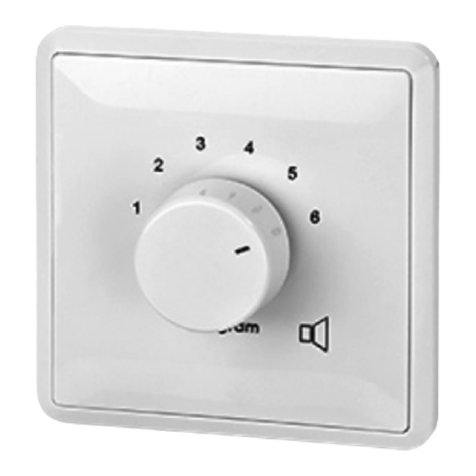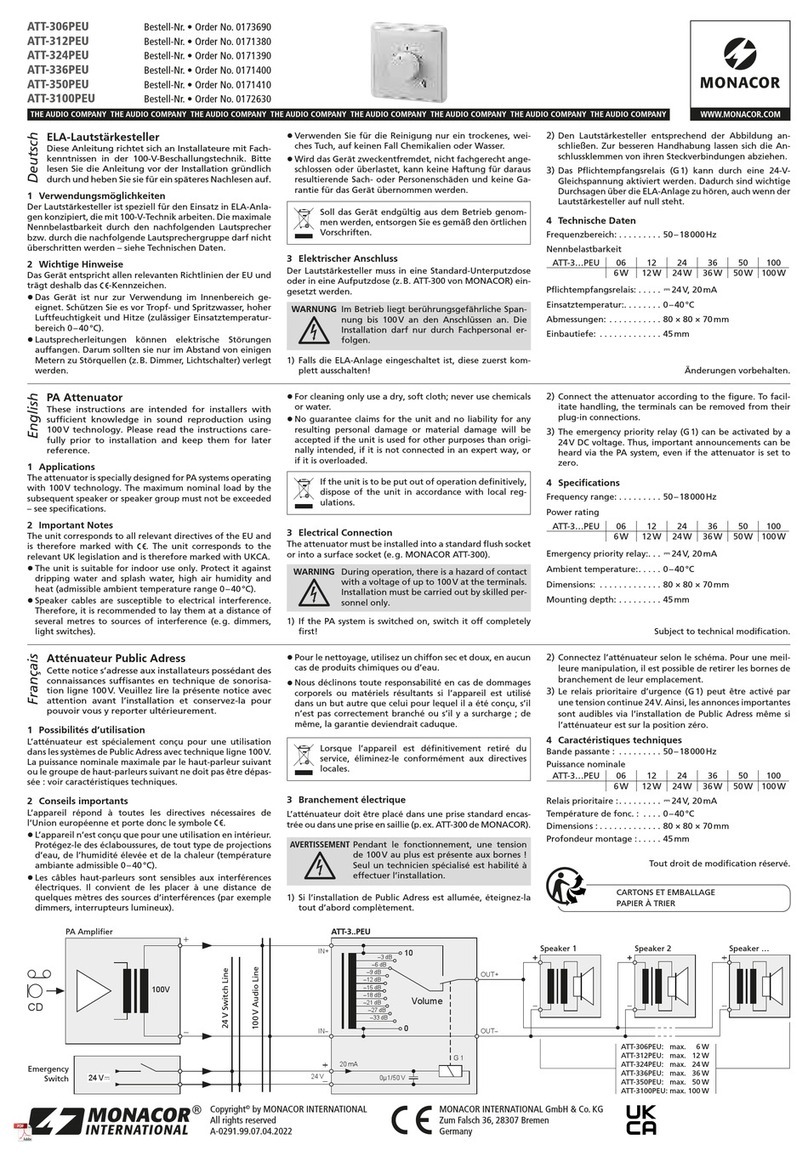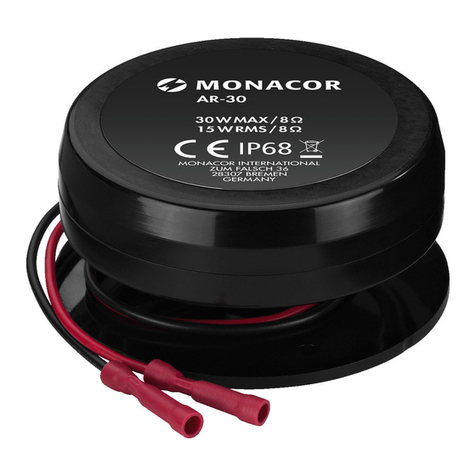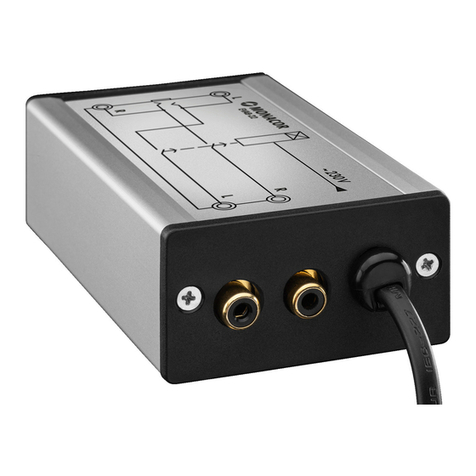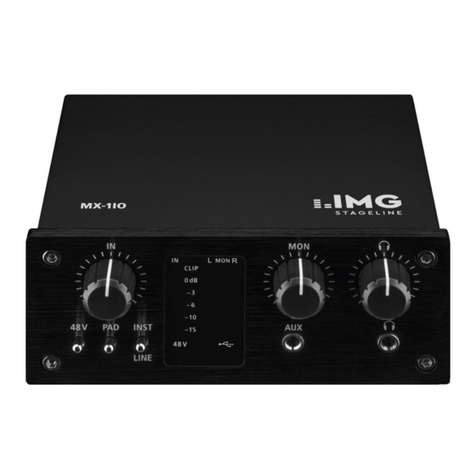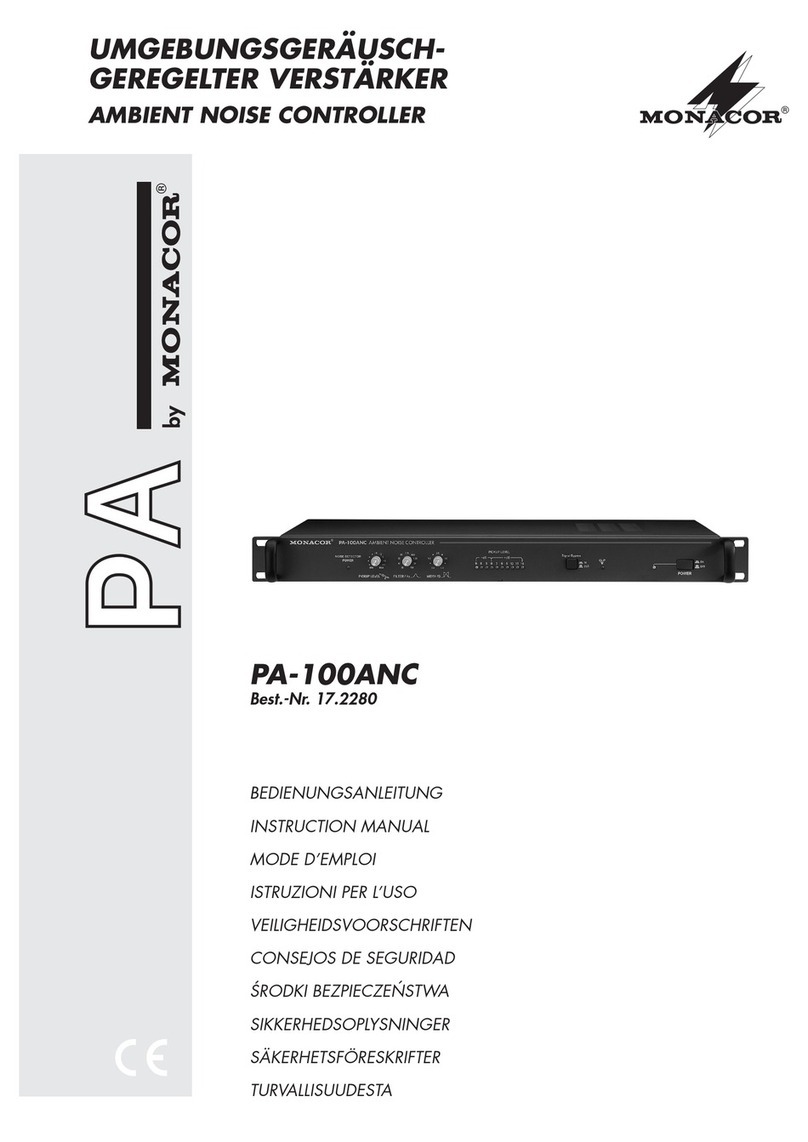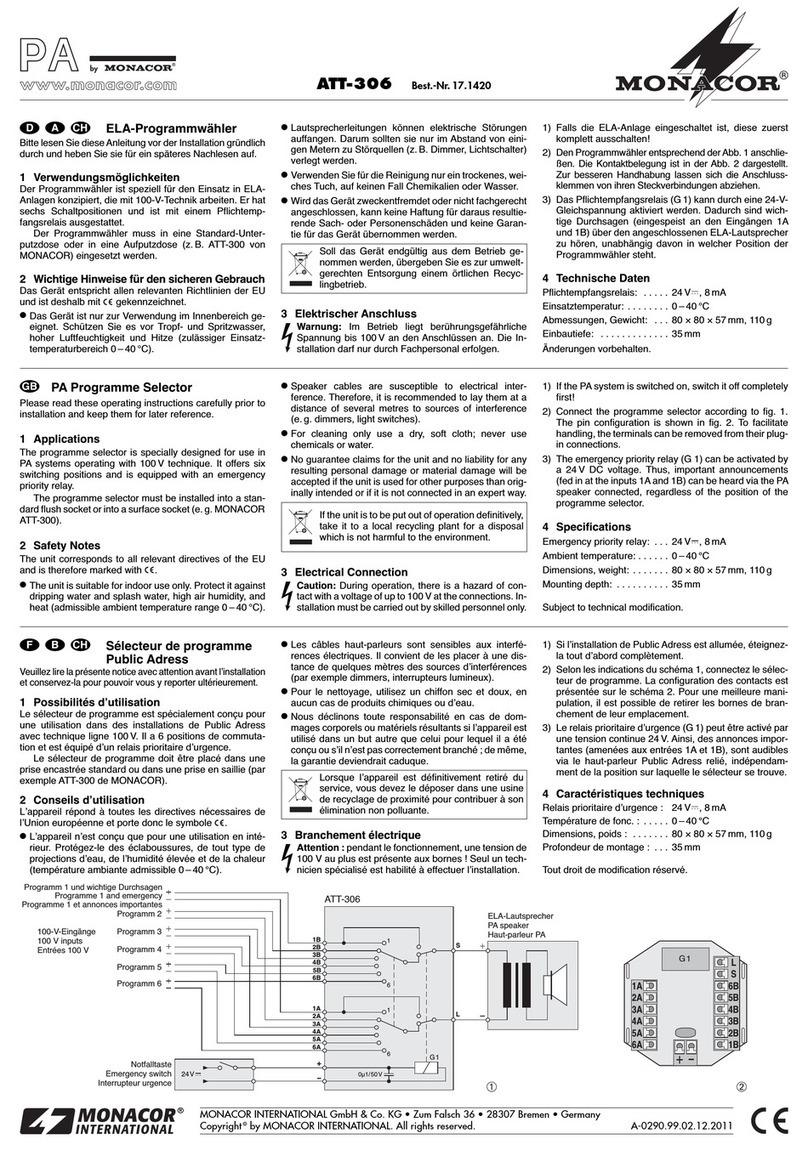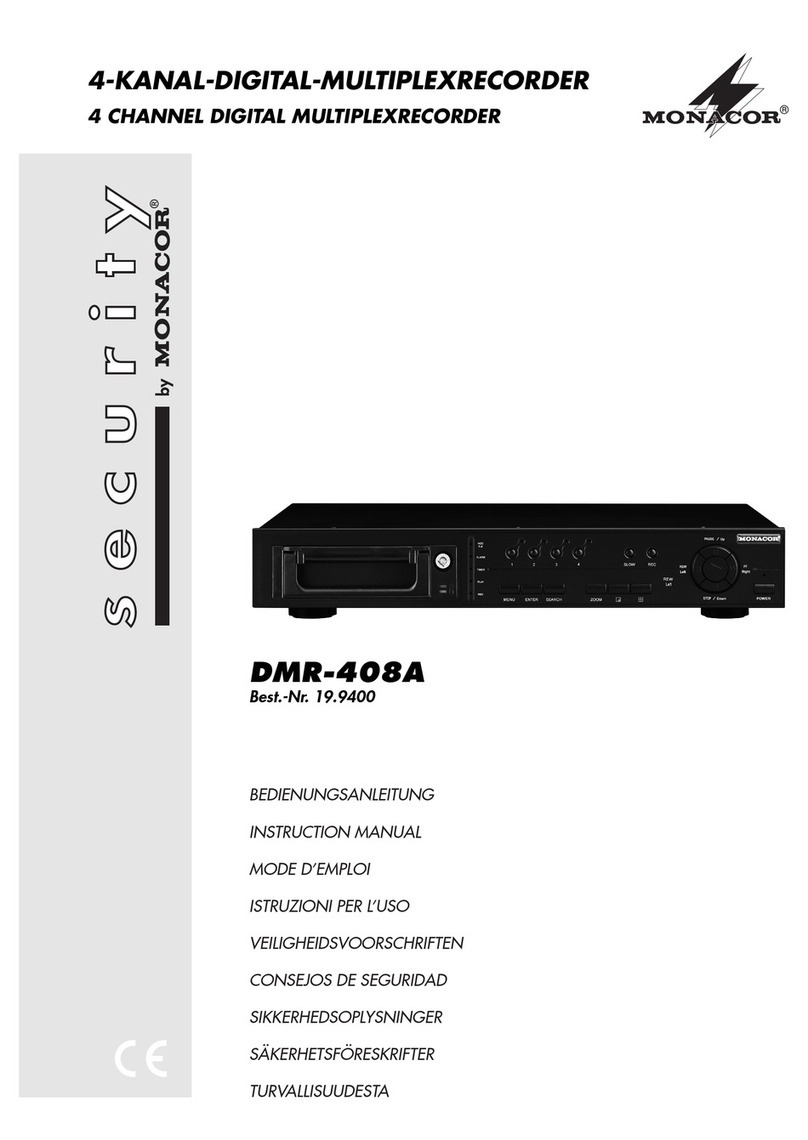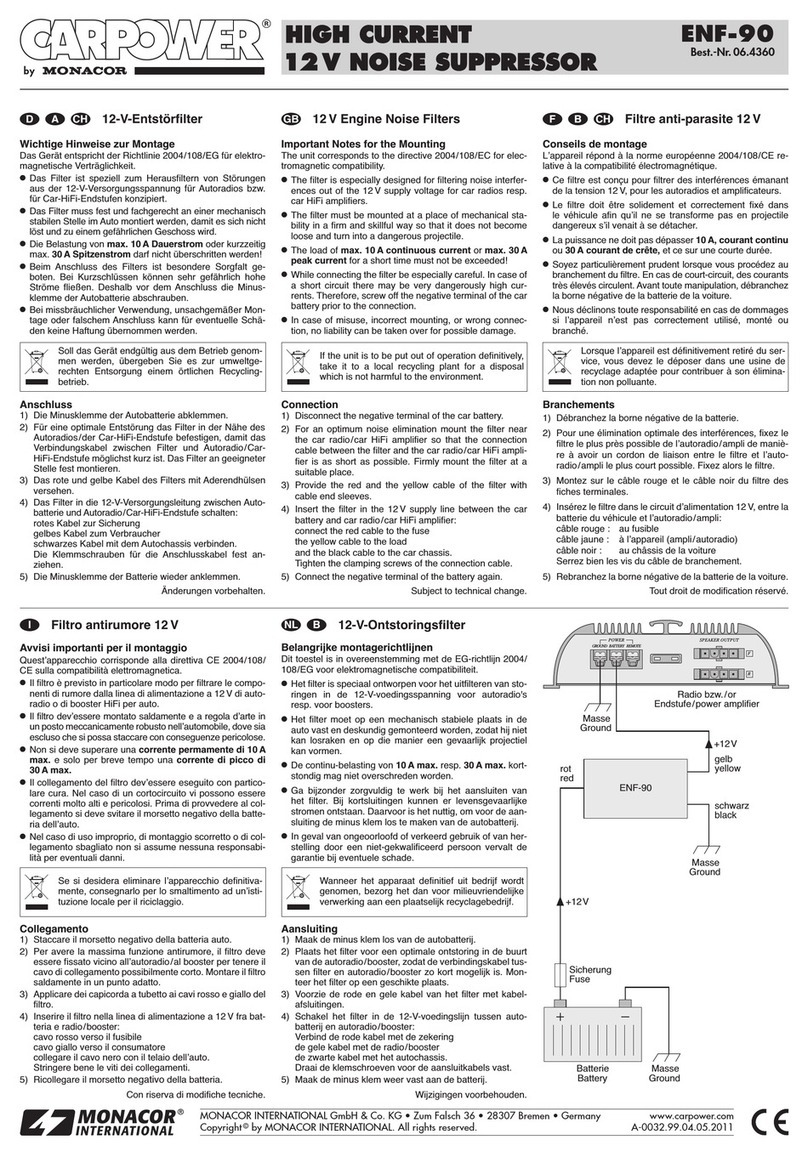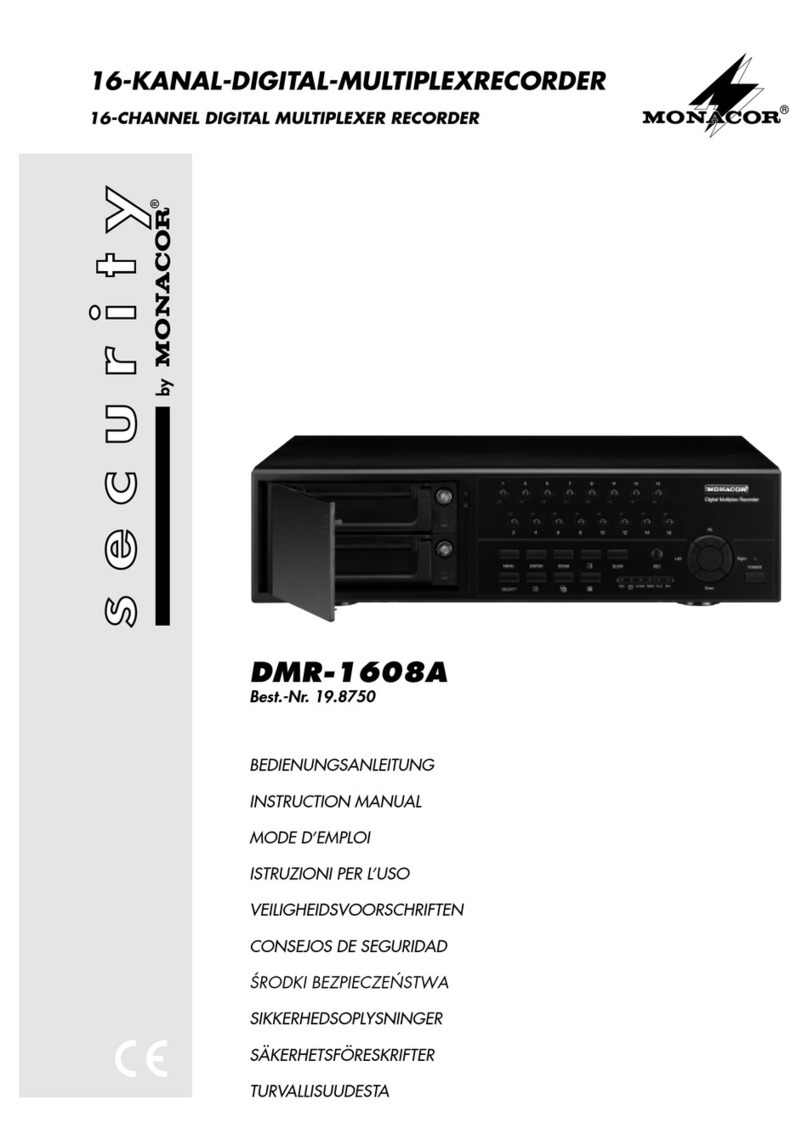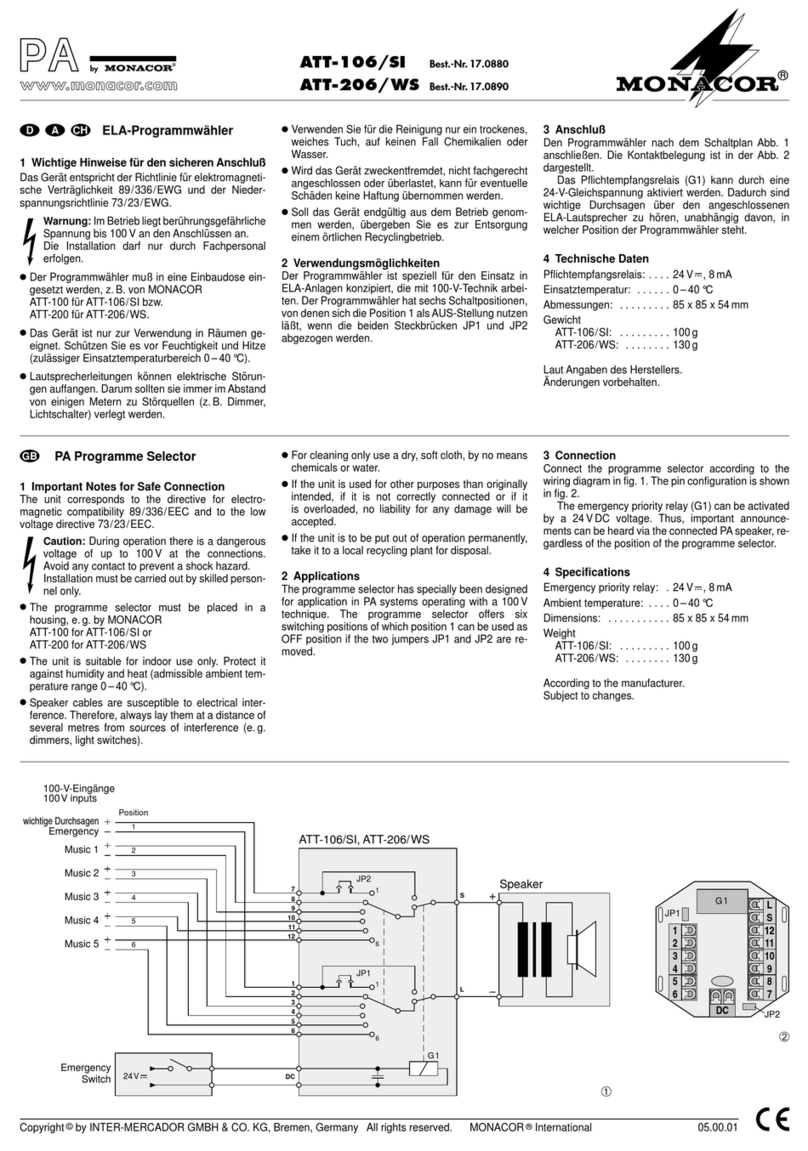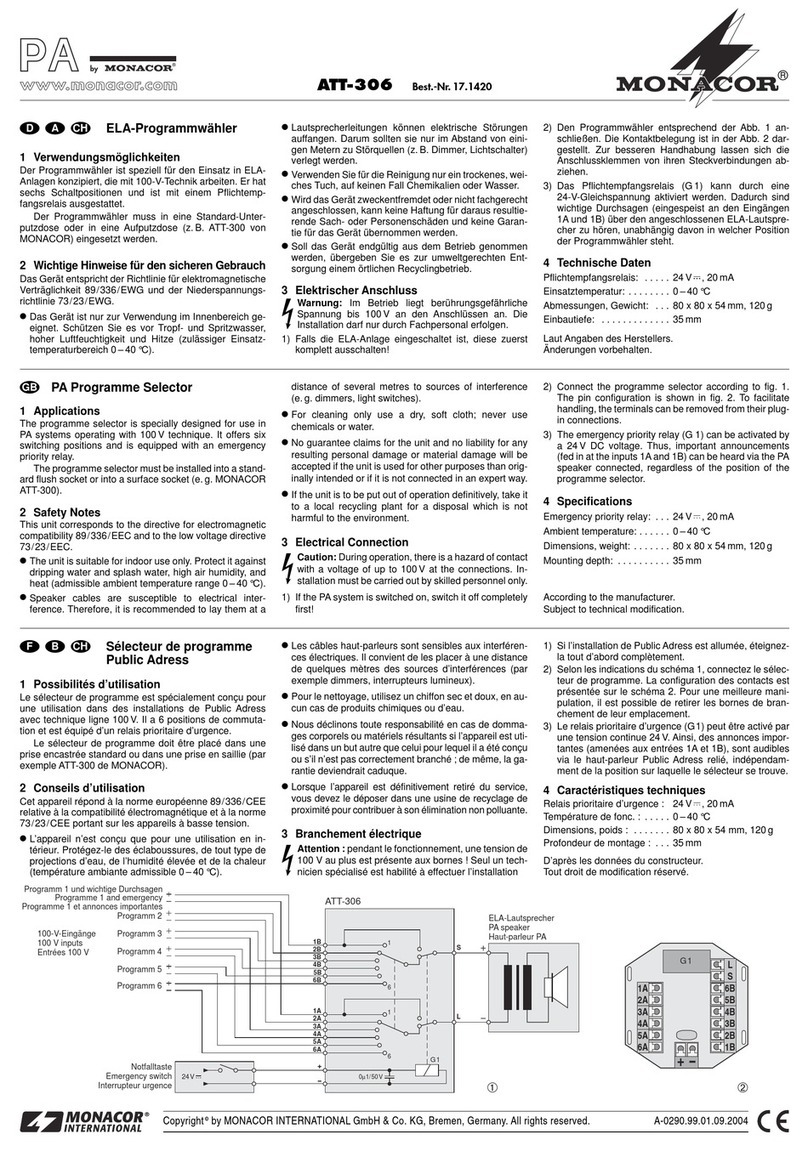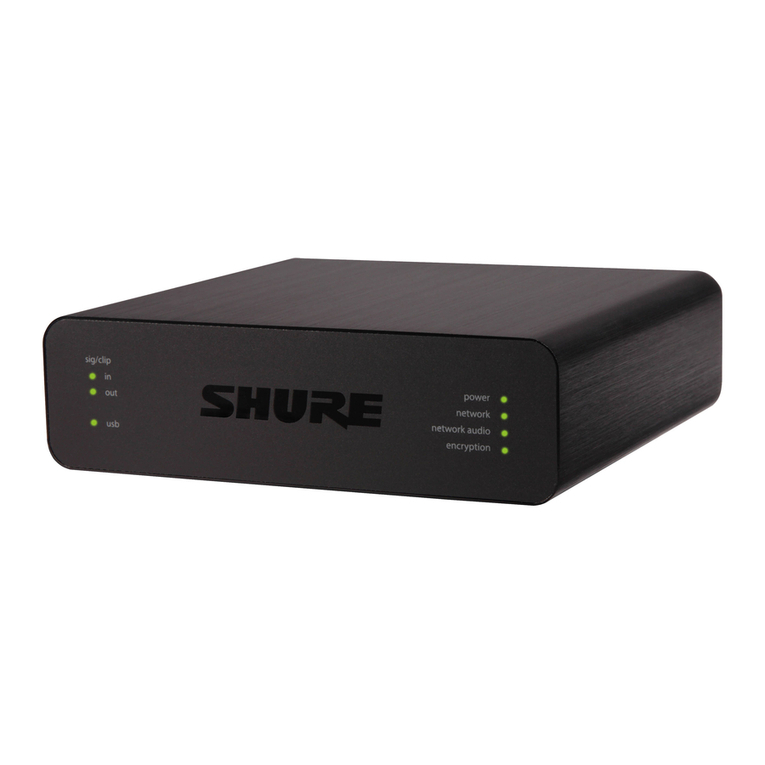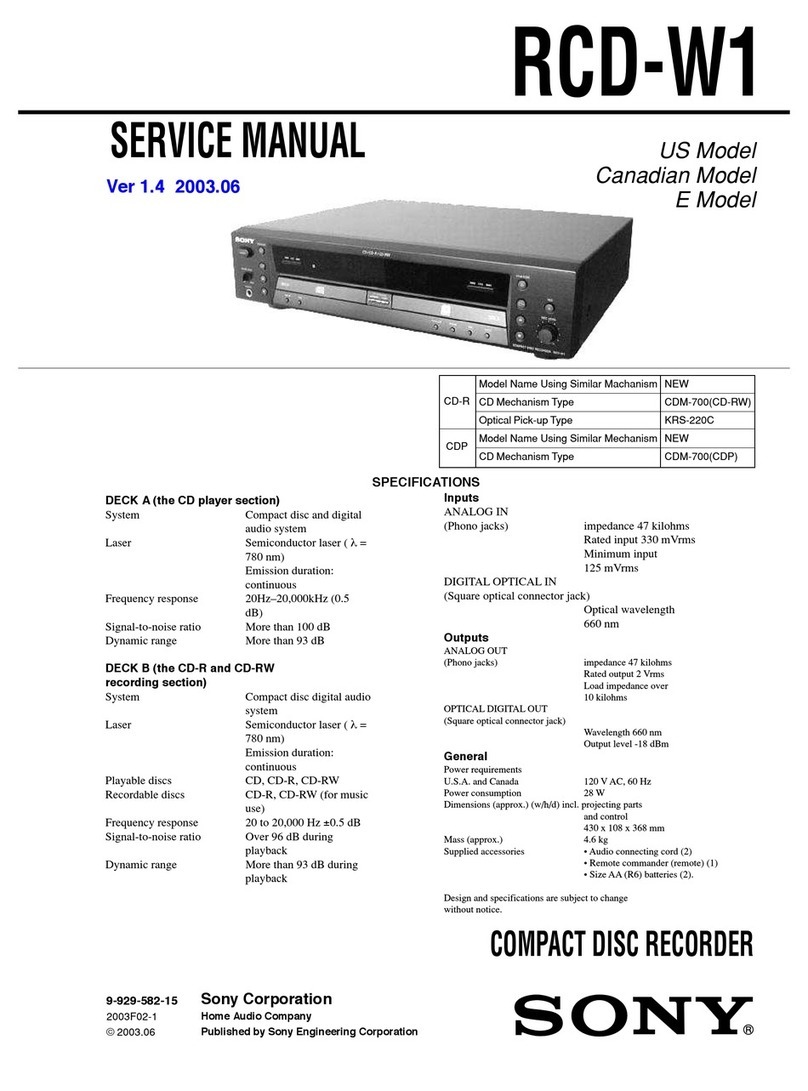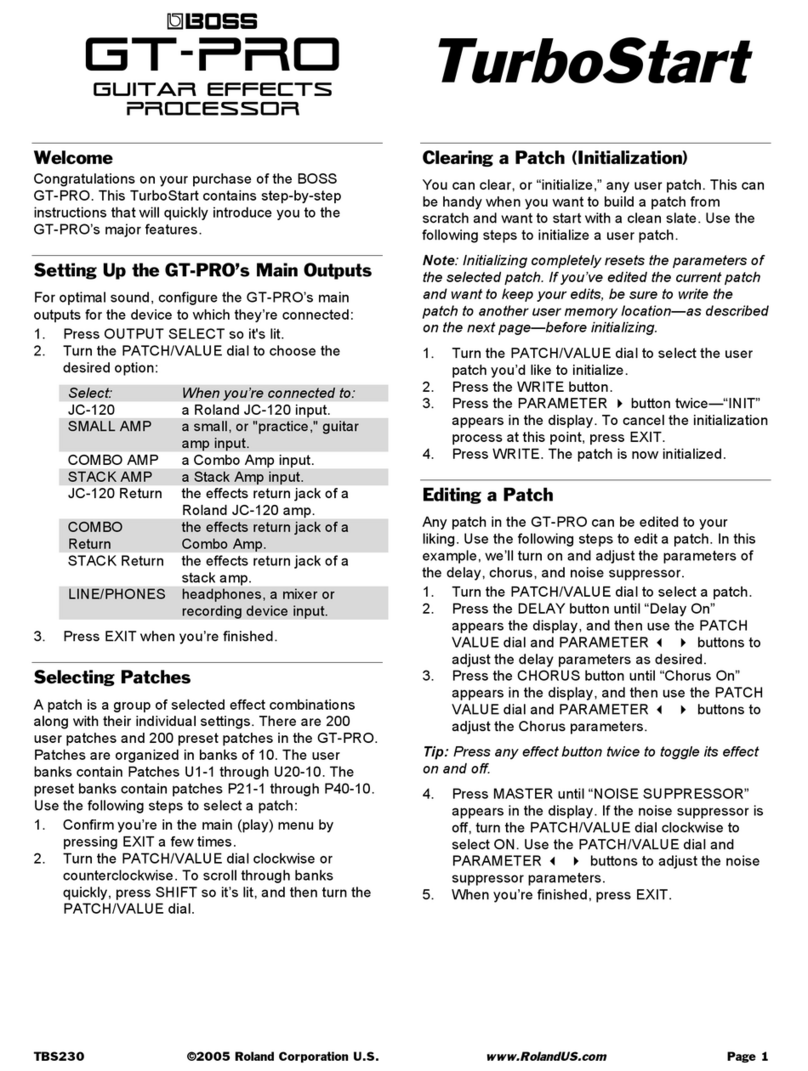CD-113DPR
Cette notice s‘adresse aux utilisateurs sans
connaissances techniques particulières. Veuil-
lez lire la présente notice avant le fonction-
nement et conservez-la pour pouvoir vous y
reporter ultérieurement.
1 Possibilités d’utilisation
Le CD-113DPR est adapté pour des applica-
tions multiples de sonorisation. Il peut lire
des CDs audio standards, des fichiers MP3 et
WMA de CDs, clés USB* et cartes mémoire*
(32Go max.).
Pour des enregistrements au format MP3
sur une carte mémoire ou sur une clé USB,
on peut relier un appareil audio, par exemple
radio, tape deck, table de mixage. De plus, on
peut copier des titres comme suit :
CD clé USB
CD carte mémoire
Clé USB carte mémoire
Carte mémoire clé USB
*Conseil : En raison de la multitude de fabricants
de supports de mémoire et de drivers d’appareils, il
n’est pas possible de garantir que tous les supports
de mémoire soient compatibles avec le CD-113DPR.
2 Conseils d’utilisation
etdesécurité
Cet appareil répond à toutes les directives
nécessaires de l’Union européenne et porte
donc le symbole .
AVERTISSEMENT
Cet appareil est alimenté
par une tension dange-
reuse. Ne touchez jamais
l’intérieur de l’appareil car,
en cas de mauvaise manipu-
lation, vous pourriez subir
une décharge électrique.
•
L‘appareil n‘est conçu que pour une utilisa-
tion en intérieur. Protégez-le des éclabous-
sures, de tout type de projections d‘eau et
d’une humidité d‘air élevée. La plage de
température ambiante admissible est de
0–40°C.
•
En aucun cas, vous ne devez poser d’ob-
jet contenant du liquide ou un verre sur
l’appareil.
•
Ne le faites jamais fonctionner et débran-
chez-le immédiatement lorsque :
1. des dommages visibles apparaissent sur
l’appareil et sur le cordon secteur
2. après une chute ou accident similaire...,
vous avez un doute au sujet de l’état de
l’appareil.
3. des dysfonctionnements apparaissent.
Dans tous les cas, les dommages doivent
être réparés par un technicien spécialisé.
•
Ne débranchez jamais l’appareil en tirant
sur le cordon secteur, tenez-le toujours par
la fiche.
•
Pour le nettoyage utilisez uniquement un
chiffon doux et sec, en aucun cas de pro-
duits chimiques ou d’eau.
•
Nous déclinons toute responsabilité en
cas de dommages matériels ou corporels
résultants si l’appareil est utilisé dans un
but autre que celui pour lequel il a été
conçu, s’il n’est pas correctement branché
ou utilisé ou s’il n’est pas réparé par une
personne habilitée; en outre, la garantie
deviendrait caduque.
Lorsque l’appareil est définitivement
retiré du service, vous devez le dé-
poser dans une usine de recyclage
adaptée pour contribuer à son éli-
mination non polluante.
CARTONS ET EMBALLAGE
PAPIER À TRIER
3 Positionnement de l’appareil
et branchements
L’appareil est prévu pour une installation en
rack 19” (= 482mm). Il peut également être
directement posé sur une table. Pour une ins-
tallation en rack, une unité (1U = 44,45mm)
est nécessaire.
Avant d’effectuer ou de modifier les bran-
chements, assurez-vous que le lecteur CD-
113DPR et les appareils à relier sont éteints.
1) Reliez les sorties LINE OUTPUT
–
L = canal
gauche, R = canal droit
–
via des cordons
RCA aux entrées lecteur CD, par exemple
sur une table de mixage ou un amplificateur.
2)
Reliez le cordon secteur livré à la prise sec-
teur puis à une prise 230V/50Hz.
4 Utilisation
Allumez le lecteur avec l’interrupteur POWER,
sur l’affichage, le message
Welcome
s’af-
fiche.
Tout d’abord le CD est lu. Si aucun CD
n’est inséré, le support USB est lu. Si aucun
support USB n’est relié, la carte mémoire est
lue. Si aucune carte mémoire n’est placée,
l’affichage indique NO DISC.
4.1 Télécommande
1) Pour insérer les batteries (2 × 1,5V, type
R03), retirez le couvercle du comparti-
ment batterie sur la face arrière de la télé-
commande. Insérez les batteries comme
indiqué dans le compartiment, refermez
le compartiment avec le couvercle.
En cas de non utilisation prolongée
de la télécommande, retirez les batteries,
elles pourraient couler et endommager la
télécommande.
2)
Maintenez toujours la télécommande dans
la direction du capteur «IR» lorsque vous
activez une touche. Il ne faut aucun obs-
tacle entre la télécommande et le capteur.
3) Si la portée de la télécommande diminue,
les batteries sont épuisées et doivent être
remplacés.
Ne jetez pas les batteries usagées
dans la poubelle domestique, dépo-
sez-les dans un container spécifique
ou ramenez-les chez votre revendeur.
4.2 Lecture de titres de musique
1)
Insérez un CD, inscription vers le haut,
dans la fente jusqu’à ce qu’il soit auto-
matiquement inséré
et/ou
mettez une clé USB dans le port USB ou
branchez un disque dur (le cas échéant
avec alimentation propre) au port USB
et/ou
mettez une carte mémoire dans la fente
SD/MMC CARD. Le coin oblique de la
carte doit être dirigé vers le haut. Pour re-
tirer la carte, enfoncez-la légèrement pour
qu’elle se désenclenche.
2)
Pour démarrer la lecture, appuyez sur la
touche PLAY/PAUSE II.
3)
Toutes les autres possibilités d’utilisation
sont décrites dans le tableau page 12.
Après le fonctionnement, éteignez l’appa-
reil avec l’interrupteur POWER.
